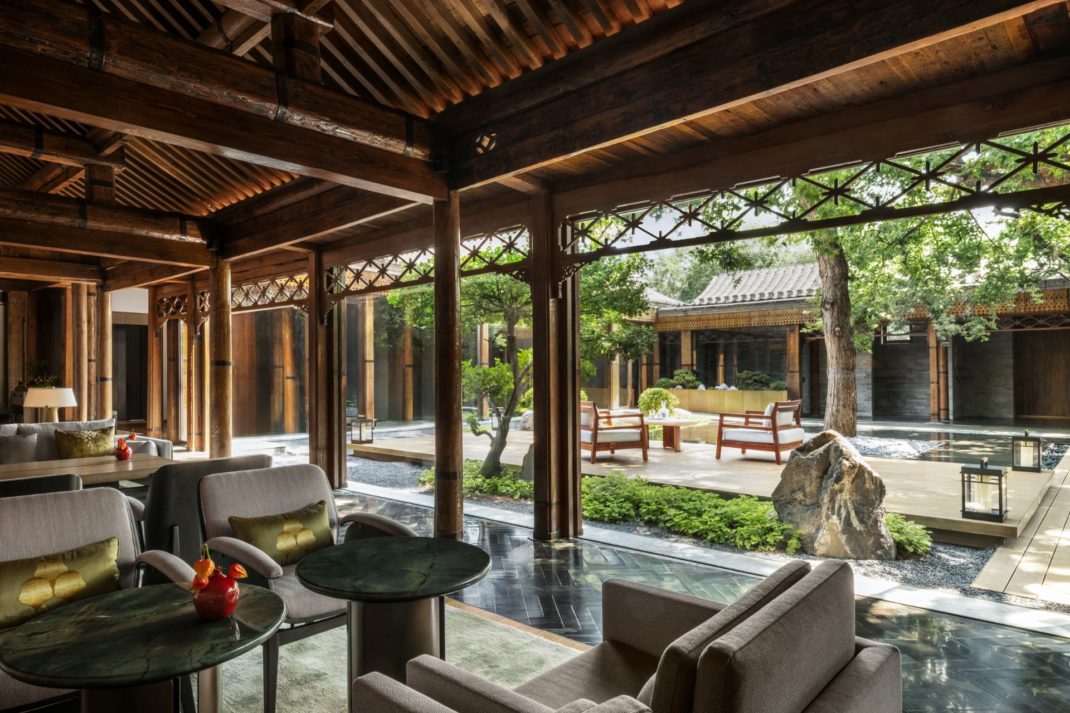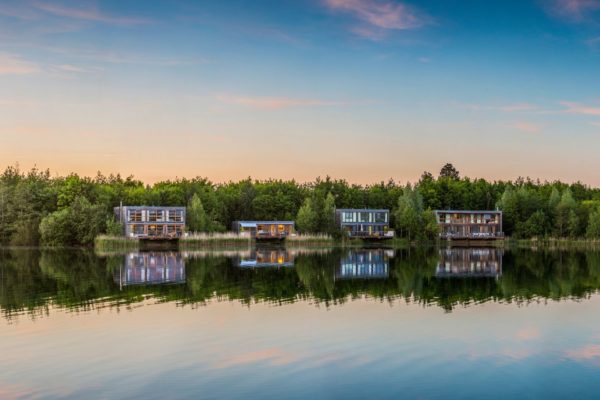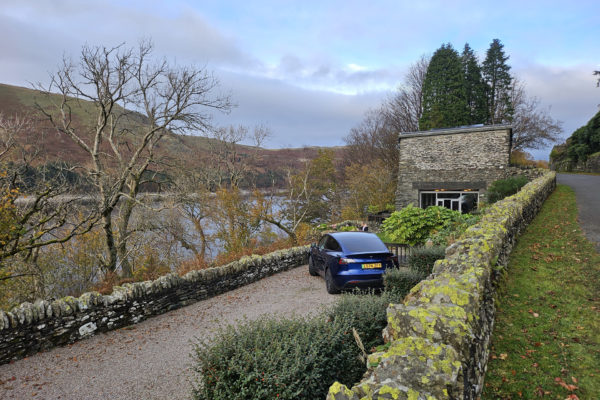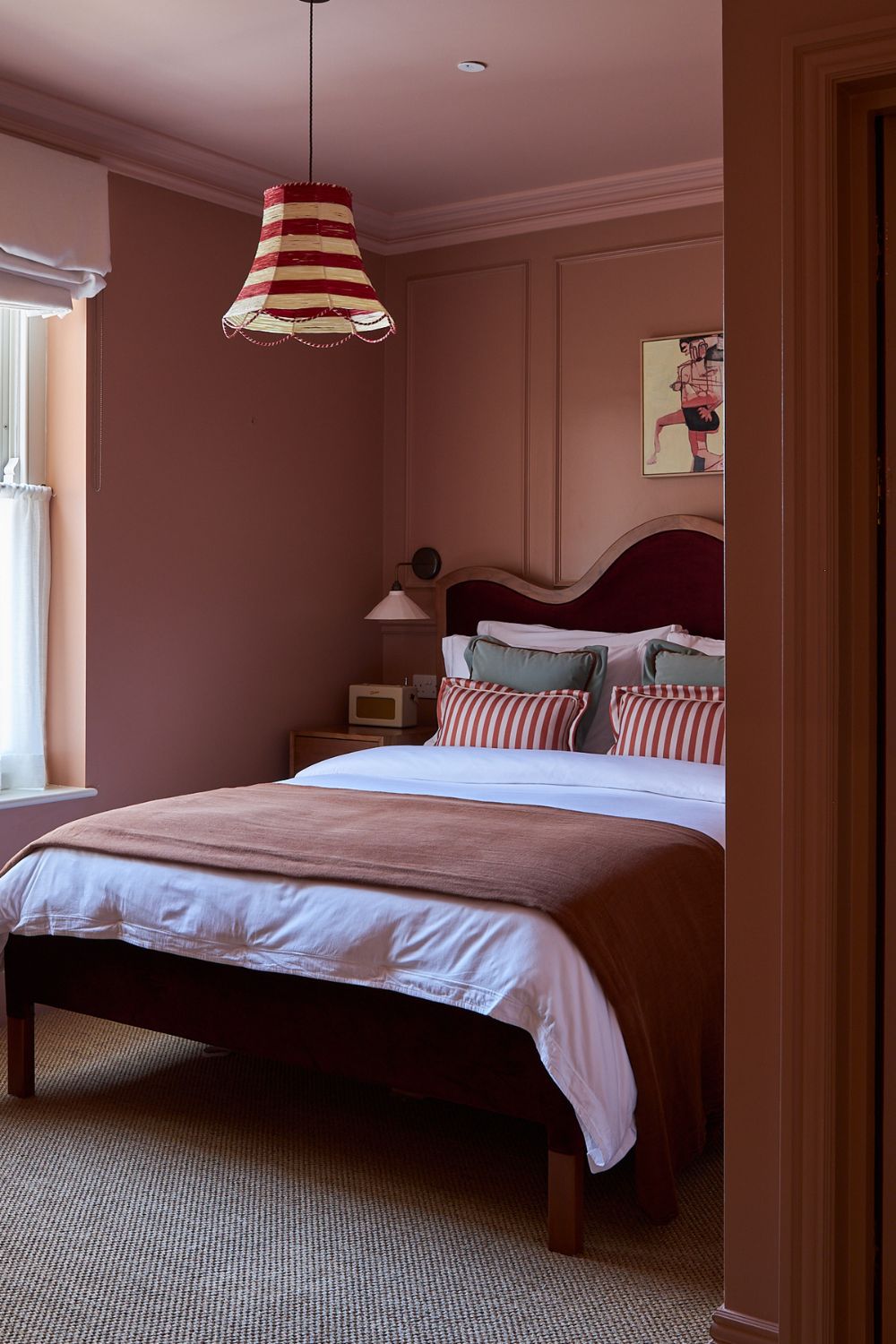
East Coast Sunshine: A Night At Margate House, Kent
By
4 months ago
Take a look inside this picture-perfect hotel
In a square that exudes faded grandeur and nods to the town’s splendid past, Margate House is a modern – and refreshing – spin on a B&B. Katie Scott heads to coastal Kent.
Review: Margate House, Kent
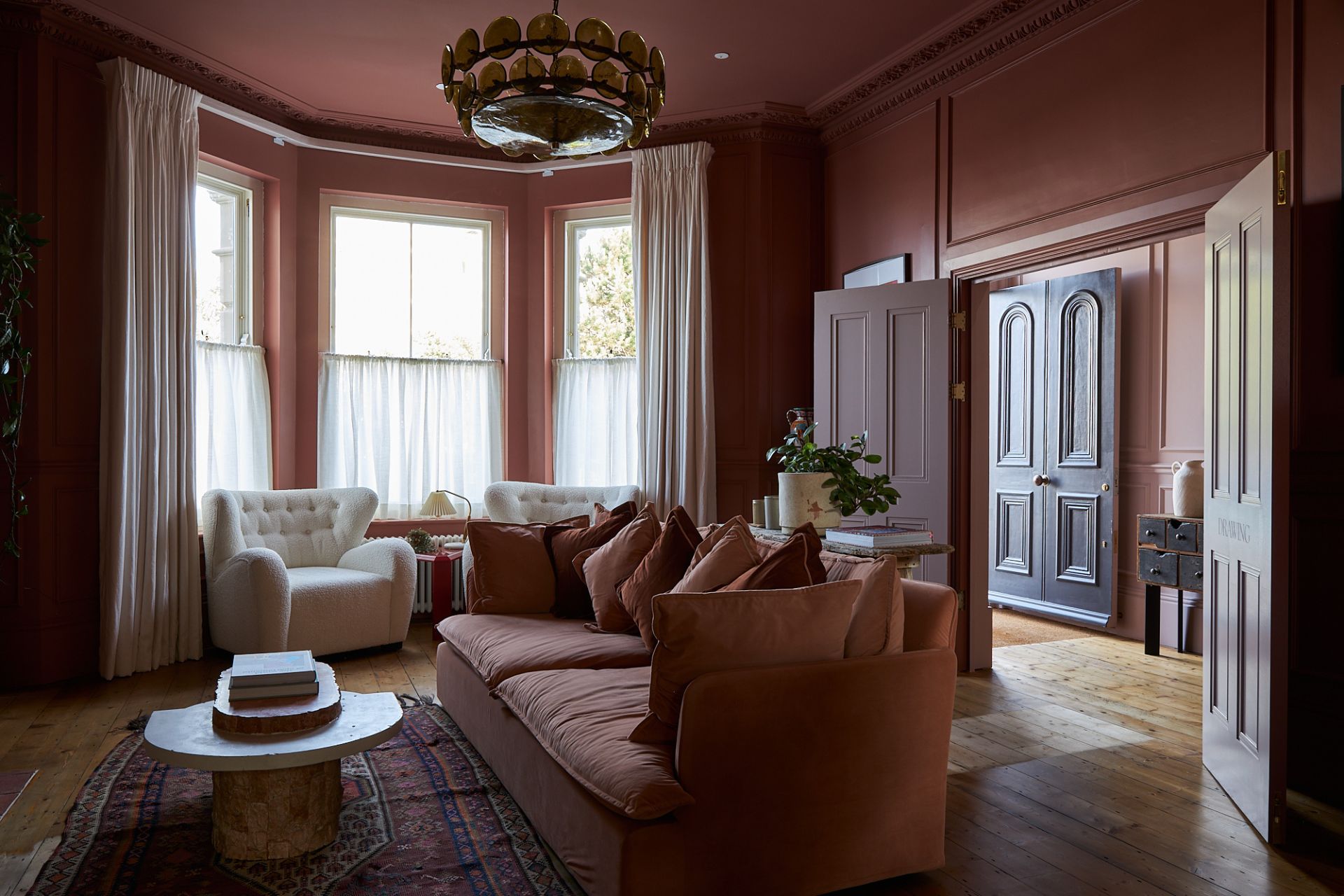
When I was little, I visited Harrods. In the corner of one of the food halls, I found a hand-painted cart filled with candy canes. They were an enticing mix of creams, blushes and caramels. I picked two and brought them home, holding them tightly in my hand as we jostled on the tube.
Stepping into Margate House, I was greeted by those colours again and they are delicious. Walls of warm pinks and high ceilings in deeply pigmented terracotta complement the blush of the East Coast sunset. In the drawing room, the same warm colours, scented candles and an intriguing display of books, wines and Vyrao perfume bottles draw the visitor in.
There is no check-in as such, just a friendly chat with our ‘host’, an artist called Issy. A relatively new inhabitant of Margate, she enthusiastically shares all of the places she has discovered. She heads off at 8pm, but all guests have a key to the front door. I scribble down her tip – Sargasso – for later. This tiny but innovative restaurant (sister to East London’s Brawn) is next to Turner Contemporary, which is a must visit in a town that delivers artistic edginess and seaside nostalgia in equal measures.
The hotel plays on this finely-balanced dynamic. A paper bag of penny sweets is a welcome touch in our room, its red and white stripes echoing the pattern of the lampshades. The waves of the headboard nod to the sea but also the ups and downs of the wooden rollercoaster that attracted holiday makers to Margate’s Dreamland amusement park in the roaring 20s.
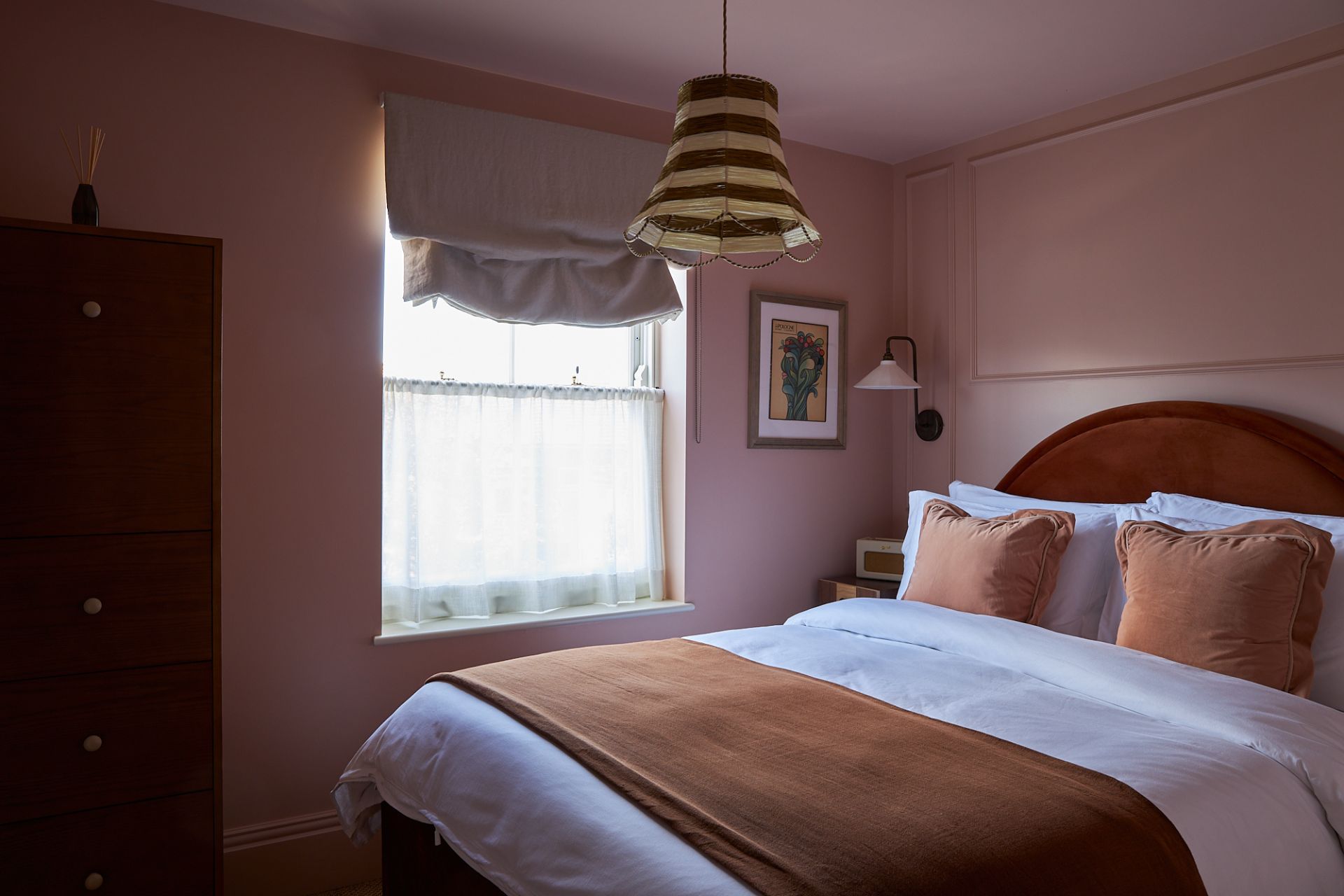
On the walls, there are vintage Polish graphic design posters, works by British artist Henrietta Dubrey and paintings from the Carl Freedman gallery, just a short walk away. The retro Roberts radio plays Classic FM as I curl up in front of the window. Our room is one of the three larger suites. There are also three small and three medium options – all of which share the same decor and details. Refillable lotions and shampoos from the innovative Margate brand formerly known as Haeckels grace the bathrooms. The beach is where its founder, Dom Bridges, first spotted the seaweed that is the main ingredient in his products and where the company’s community sauna now sits.
Our room overlooks Dalby Square. An arcade sends glowing beams onto the wet pavement in the near distance. This square tells the town’s story. The hotel’s owner, Will Jenkins, has put his own money into planting trees and laying grass where there was once a grimy car park, littered with rubbish.
The square is now peaceful as the pink skies darken to blue-grey. A couple walks past heading to one of the wine bars or eateries on the characterful Northdown Road. The hotel is in Cliftonville and its Victorian villas line quiet residential streets. They lead down to the seafront promenade where huge installations of street art are framed by grandiose lampposts decorated with mythical sea creatures. ‘Stay Weird Margate,’ says one painting on the side of a tiny fisherman’s cottage with dusty windows and a peeling blue door.
The Lido, an Art Deco complex, is now sadly disused and filled with sand; but there is momentum to restore it. Artist Tracey Emin lived in Margate as a child and has now returned. She has bought the now derelict Westbrook Loggia building down the bay – another bathing pavilion – and is promising its rejuvenation.
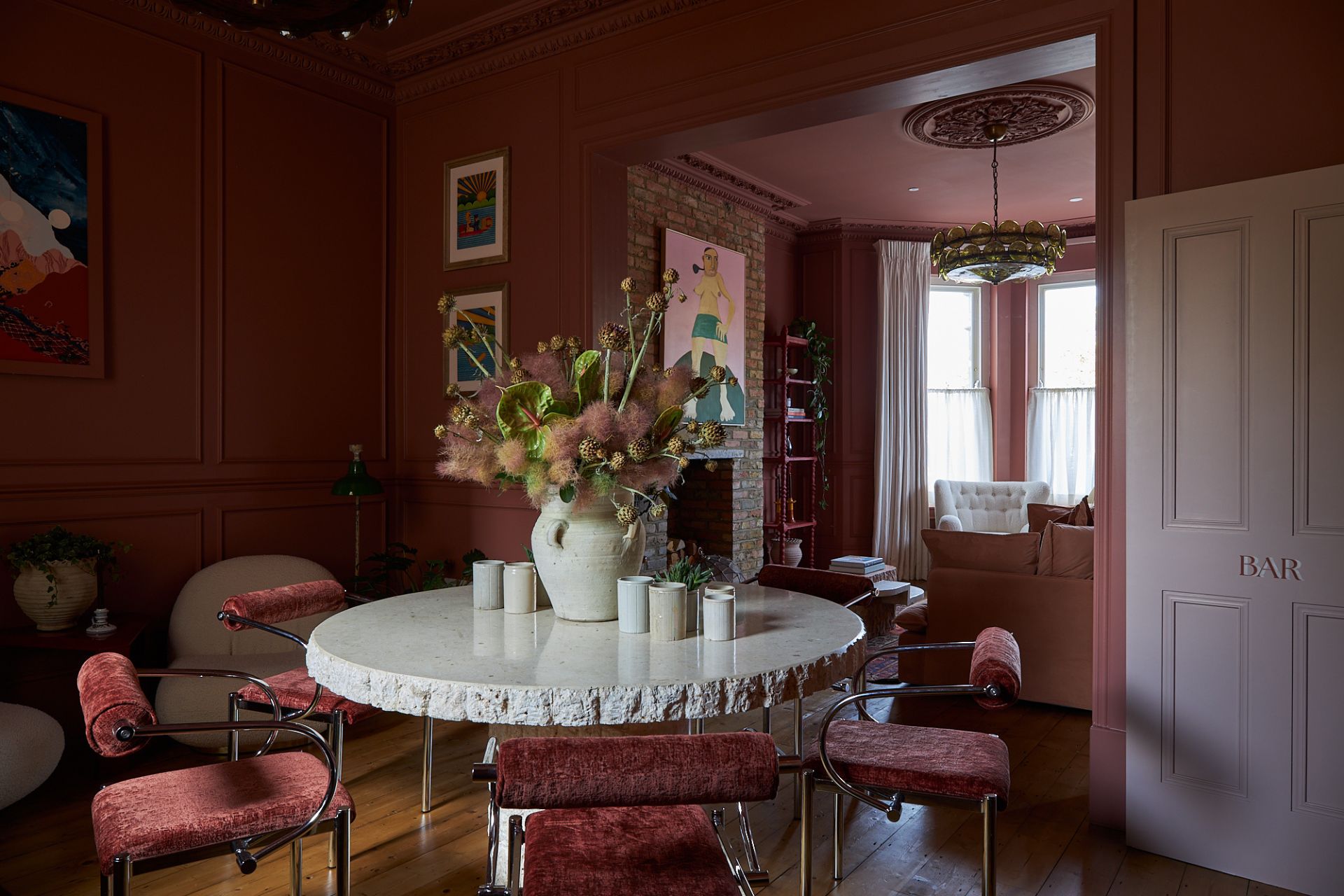
Meanwhile, Walpole’s tidal pool is just 15 minutes’ walk from the hotel and is a quiet spot in winter. Its surface mirrors the sky, broken only by the ripples from the few hardy souls who swim then chat, standing under the cliffs in dry robes, clutching thermos flasks.
After small plates and orange wine at Sargasso, we wander back to Margate House and turning the key feels like a homecoming. The house has a welcoming personality. Jenkins explains that he created a female persona for each of his ventures. The hotel reflects her loves, her whims and her warmth. ‘I want them to feel like homes,’ he explains. ‘I want people to be able to believe that room over there was where she used to sit and write her letters. Anyone can build a hotel and anyone can build a bar, but creating a personality around it is so unique.’
Margate House is the first, but Jenkins has bought Number Seven next door and Number 15, which will be apartments and a better fit for families with pets. He says each apartment will nod to the people who kept these grand mansions ticking over – from the cooks to the cleaners.
A hotel in Folkestone is also now in renovation as is a restaurant space for Margate House. At the back of the building, it will offer one meal per day – one vegetarian and one meat option – and will be open to anyone. Jenkins suggests there may be an element of culinary theatre: the chef will cook in the space with the diners and produce will be fresh, local and creative. The basement is also being converted to breakfast space, where guests can sit at a huge farmhouse table and help themselves from shelves lined with cereals, teas, cups and bowls.
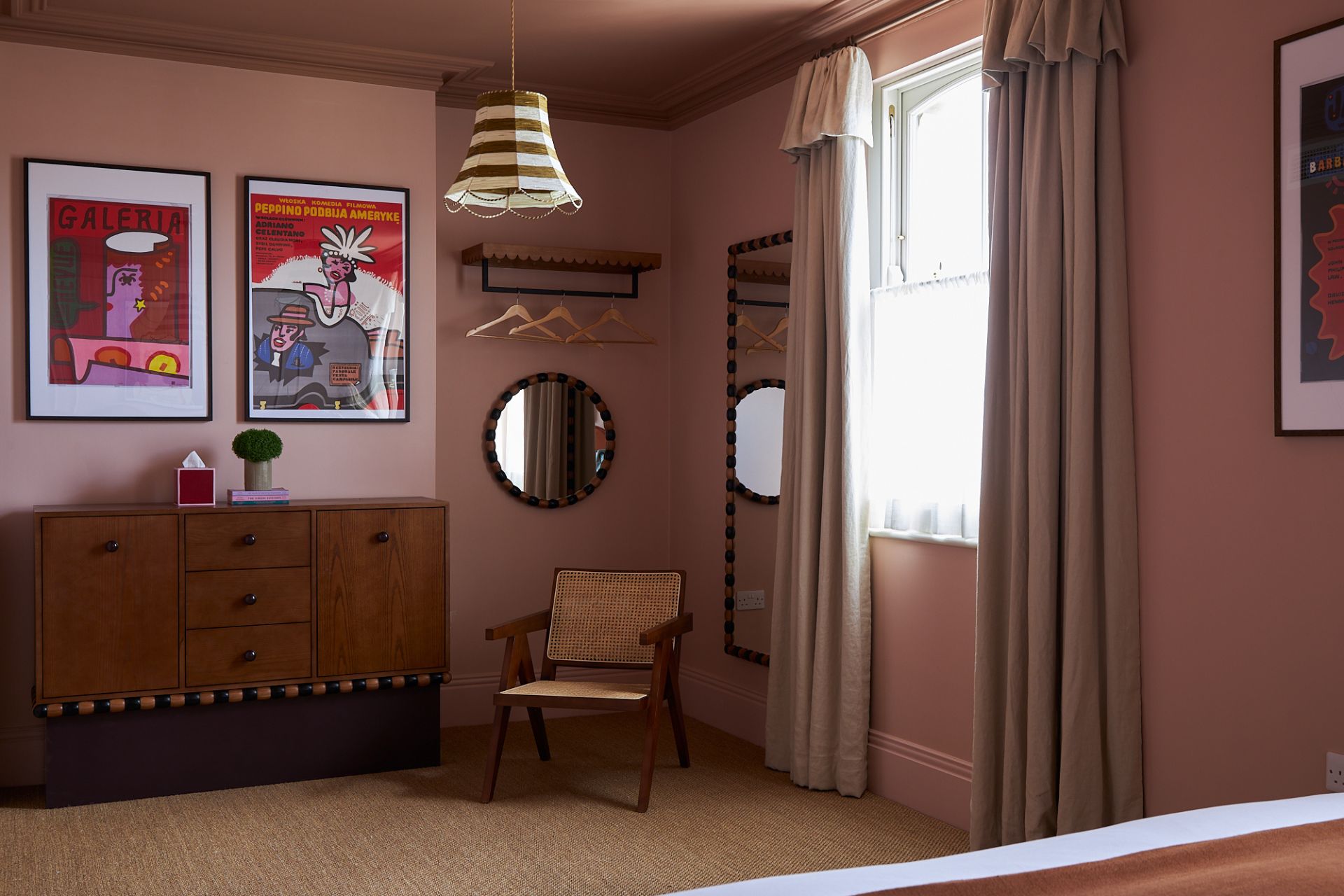
For now, guests can order a breakfast basket of pastries, juices, granola and yoghurt from the local Staple Stores and The Good Egg, the coastal branch of the Stoke Newington favourite. It is one of a growing number of London ventures, which have found themselves a home in the town, nestling between cafes and shops that have been here for decades.
Their owners are among a wave of new inhabitants who are investing in the town. Jenkins says he hates the word gentrification but is definitely buoyed by the regeneration he is slowly seeing. ‘I think Margate was always the place to go to. The Victorians built it up as a holiday resort. Londoners would just get on a train and come down to the coast,’ he says. And they are again. He points out how beautiful the station is that would have been the gateway to the town for these excited crowds as they jostled down to the beach and lido. ‘Now so many of the town’s Victorian buildings are just sitting there empty and derelict,’ he continues. ‘From both a business and personal point of view, I love to see them brought back to life.’
But will the town’s grit and bohemian edge be lost as it’s scrubbed up? Jenkins thinks not. And Margate House again serves as an example of what the town could become. It has uniqueness and charisma in abundance, but is also chic, beautiful and welcoming. ‘There’s a strength of character in Margate. It will retain its artistic vibe as long as people continue to do extraordinary things that help the community.’ And Jenkins, and the team at Margate House, are among them.
BOOK IT
Doubles from £185 per night.margatehouse.co.uk



